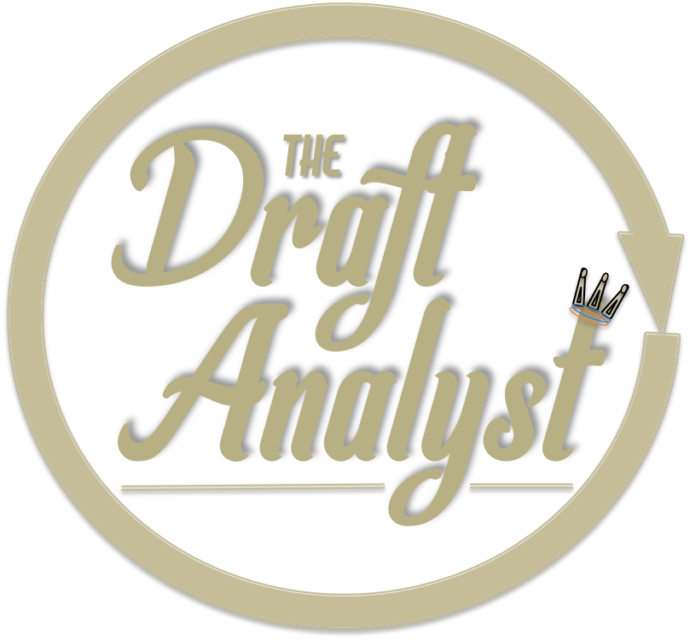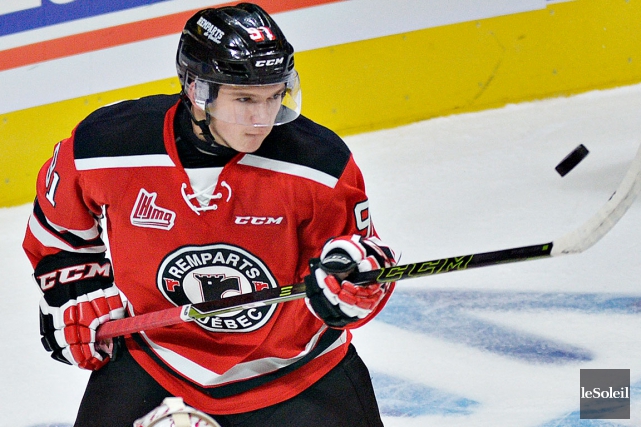 122. RHD Jake Ryczek (Sioux City, USHL):
122. RHD Jake Ryczek (Sioux City, USHL): Providence-bound puck mover who oozes skill, quickness and smarts, and put forth the effort to involve himself (and win) puck battles. Ryczek is a disciplined player who comes across as quite flashy, and he owns a high-caliber howitzer which allows him to be a dual skating/shooting threat, especially with the man advantage. We like the fact that a midseason trade from Sioux City to Waterloo caused a huge spike in production, as he upped his points-per-game average by over half a point per game. A native of Springfield, MA, Ryczek led all USHL under-18 blueliners in scoring with 34 points in 47 games.
 123. LW Greg Printz (Selects Academy, USPHL):
123. LW Greg Printz (Selects Academy, USPHL): Hard-nosed power forward with outstanding balance who works hard to get his name on the scoresheet. Printz is a Providence commit who likes to use his size (6’2, 200) in front of the net, where he plants his legs and stick like a tripod to form an unmovable barrier. Defenseman have a hard time getting positioning on him, but that may change once he faces older, physically mature NCAA blueliners. Printz is quicker off the puck than he is on it — he doesn’t seem all that comfortable handling it unless he has time and space. But he’s aware and decisive on loose pucks in both the crease and low slot, using his long reach to swat pucks in or prevent the goalie from covering up. His skating is average as he lacks first-step quickness, but he and center Matt Jakubowski (2017 draft) showed good chemistry to where Printz was able to beat defenders to a given spot to receive a pass from his center. He owns a good shot but shoots for the long side far too often, so working on his speed to the outside to gain territory off the rush closer to the goal should be a focus this offseason.
 *124. (VAN) C Matthew Boucher:
*124. (VAN) C Matthew Boucher: It would behoove the brain trust of le bleu-blanc et rouge to add some fire to their lineup’s belly, and taking the local route to nab the son of former NHL blueliner Philippe Boucher is something we strongly recommend. Boucher got no love from the NHL’s scouting apparatus, going unranked despite leading a young Remparts team in goals (30), points (60) and penalty minutes (93). He plays bigger than his 5’9, 175-pound frame, as he loves to agitate, throw the body and involve himself in trench warfare. He missed some time with a shoulder injury, but advanced stats gurus are going to love a kid who centered the top line, played in all situations, won close to 60 percent of his draws, and fired 4.2 shots a game – the highest among all QMJHL centermen.
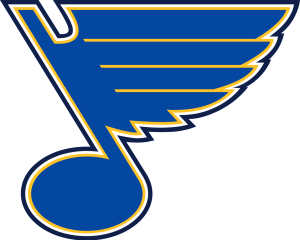 *125. (CBJ) C Cameron Hebig (Saskatoon, WHL):
*125. (CBJ) C Cameron Hebig (Saskatoon, WHL): It’s easy to say a specific play “runs an offense” and not back it up with anything valid. But in the case of Saskatoon’s speedy overage pivot, he truly is its most invaluable cog. Hebig is an exceptional playmaker, especially off the rush, where he uses his advanced hockey sense and vision to quickly identify more than one option. You simply have to get open, and Hebig will find you with a perfectly timed set-up. Rating him against his age group reveals that he was fifth among 2015 and 2016 draft eligibles with a .915 primary points-per-game average. Remember, Saskatoon was a doormat this year, so it wasn’t like Hebig had much to work with. The Blues like to have quick-strike forwards, and he has the kind of pop suited for their style of play.
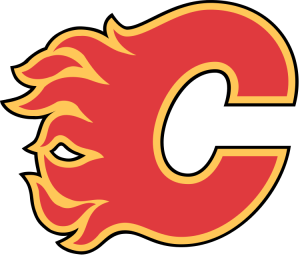 126. C Brayden Burke (Lethbridge, WHL):
126. C Brayden Burke (Lethbridge, WHL): Dynamic playmaker with exceptional vision who tied for the WHL lead with 82 assists. Burke is an overager who clicked with linemates Tyler Wong and Giorgio Estephan, giving the Hurricanes one of the Dub’s most potent top trios. He’s a battler whose quick-thinking and vision allows him to make high-percentage plays off of seemingly harmless puck battles. He’s only 5’10 and weighs under 170 pounds, but you have to get up real early in the morning to even think about slowing Burke down, and even then you’re in for quite a task. His overall skating is solid, but his footwork and edges help him make up for a lack of explosiveness. Burke finished second in the circuit with 48 primary assists, and though his goal total of 27 may seem low, he possesses goal scoring know-how in terms of stick positioning and can beat a goalie with a hard, accurate shot.
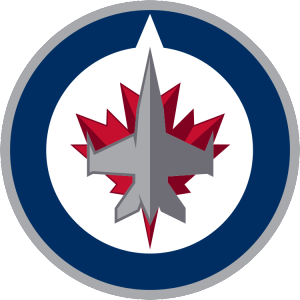 127. G Zach Sawchenko (Moose Jaw, WHL)
127. G Zach Sawchenko (Moose Jaw, WHL): It’s not a great draft for goalies in terms of depth and upside, but Sawchenko is an interesting candidate in that he actually produced an impressive wire-to-wire campaign in his first year of eligibility. A butterfly goalie with decent length (6’1) and quick reflexes, he finished sixth among WHL goalies who played 50 or more games in both wins (28) and save percentage (.916). Sawchenko’s biggest issue is net awareness – he loses himself despite properly facing the shooter, leading to a lot of short or long-side goals against. Still, he’s young enough to fix these minor kinks and be considered a candidate for Team Canada’s 2017 world junior squad.
 128. C Juha Jaaska (HIFK U20, Liiga Jrs.):
128. C Juha Jaaska (HIFK U20, Liiga Jrs.): Gritty yet skilled two-way center who always seems to be in the right place. Jaaska was a fixture on Finland’s under-18 squads, and his three-zone play proved valuable at their gold-medal run at the recent U18 worlds. He’s a speedy and responsible forward who plays with a high compete level, which is why he’s always stood out over the course of several tournaments. Jaaska plays without fear, and he’s at his best when taking the puck strong to the net. He kills penalties extremely well, but there’s more to his game than sound play. Jaaska is a victim of circumstance, as Finland’s scoring depth is the greatest it’s been in years. One of the undervalued aspects of his game is the ability to find open ice; a testament to his understanding of the game. There’s a good bet he’d flourish with an expanded role, but for now he has to be considered one of the better checking options in the lower rounds.
 129. LHD Dmitri Alexeyev (Russia U18, MHL):
129. LHD Dmitri Alexeyev (Russia U18, MHL): It’s understandable if Russia’s notable draft-eligible defensemen happen to play in North America. But it would be foolish to sleep on its outstanding collection of two-way blueliners who grace the U18 team’s backline. Alexeyev is their catalyst, anchoring the top pairing for all critical situations. He’s an agile skater with outstanding lateral movement, and he is a threat to either join the rush or create one himself. Alexeyev missed the chance to strut his stuff at the U18 worlds thanks to the team-wide meldonium issue, but he remains a multi-zone force who will only get better as he fills into his 6’0, 190-pound frame. He loves to involve himself in board battles and throw his weight around, but providing offense is definitely his bread and butter. Alexeyev owns a hard accurate shot without much backswing, and we love the way he settles the puck down and passes with precision.
 *130. (MON) C Linus Lindstrom (Skelleftea J20, Superelit):
*130. (MON) C Linus Lindstrom (Skelleftea J20, Superelit): Canadians may remember this crafty two-way pivot as the kid who ended Team Canada’s tournament with a shootout winner at the U18’s last April. Maybe knowing that he did the same thing to Russia at the Five Nations in February soothes the sting a little, but he’s nevertheless a solid later-round option. Lindstrom won’t blow you away with any specific skill, but he’s a reliable depth forward who can surprise you with an accurate, above-average wrist shot. His skating is slightly above average, but he’s a tenascious forechecker who finishes his checks and can sniff out a half-hearted clearing attempt.
 131. RW Kyle Maksimovich (Erie, OHL):
131. RW Kyle Maksimovich (Erie, OHL): Diminutive yet responsible sparkplug who was a consistent scorer for a deep Otters squad, finishing the season with an impressive 71 points in 68 games. Maksimovich plays fearless, as if he’s 6’9 rather than his listed 5’9. He hits, hustles, scratches and claws his way to scoring opportunities, but he can also whip a pretty accurate through a seemingly clogged lane. His speed and endurance make him a perfect penalty killing option, and a willingness to take a beating but remain on his skates enabled him bury quite a few power play markers from within the minefields of the low slot.
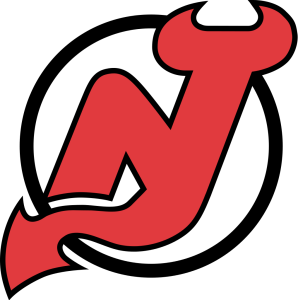 132. C/W Seamus Malone (Wisconsin, Big-10):
132. C/W Seamus Malone (Wisconsin, Big-10): The luck of the Irish wasn’t enough to provide Badgers fans with a winning season, but the double-overage Malone played a pivotal top-six role in their revival from a horrid campaign in 2015 in which they only won four games. He’s an excellent stickhandler and playmaker who will rock a defender to sleep with his puck skills before slicing through passing lanes with a hard, tape-to-tape set-up. Malone is an excellent skater with very good edges, and his ability to combine speed with skill helped him solidify a top-six role throughout the season. His size (5’10/180) was part of the reason why he went undrafted for two straight years, but the Devils would be smart to snag a pivot who was one of the NCAA’s top freshman set-up men.
 133. C/W Tim Wahlgren (MoDo J20, Superelit)
133. C/W Tim Wahlgren (MoDo J20, Superelit): One of the draft’s best shooters who certainly knows how to make his way onto the highlight reels. Wahlgren is a classic sniper who scores in bunches and can do so without much help. He owns a ridiculous wrist shot, and the fact that he can handle a hard pass and rip one on net in an instant is probably why he was one of the Superelit’s top goal scorers. He is a very good skater who plays with his head up and will weave his way into openings with the hammer cocked. Wahlgren has very soft hands and is one of the better draft-eligible forwards at getting blade on point shots. There is a downside, however, as he has issues with coverage in his own end thanks to what seems like an indifferent attitude towards defending.
 134. C Garrett Pilon (Kamloops, WHL):
134. C Garrett Pilon (Kamloops, WHL): The son of former New York Islanders’ defenseman Rich Pilon who was one of several bright spots during the Blazers’ resurgent season in which they improved 22 points in the standings and qualified for the playoffs. Garrett is an average skater but a very good playmaker – 22 of his 30 assists were primary – and he boasts a wicked wrist shot that he can fire with authority whether off balance or if the puck is in his feet. He loves to get in on the forecheck and use his upper-body strength to separate opponents from the puck, and once he gets it, there is no telling how many options he’s already surveyed. He can play center or either wing, and at times he played the point on the power play with fellow draft eligible Dawson Davidson. He has legitimate top-six upside with the kind of diverse skill set to fit and stay in anyone’s lineup.
 135. LHD Kristians Rubins (Vasteras , MHL):
135. LHD Kristians Rubins (Vasteras , MHL): A season of promise may have been altered following offseason shoulder surgery which sidelined him until December, but this Latvian tower of power recovered to play top-pairing minutes for Vasteras. Rubins is a beast who loves to use every inch of his 6’4 frame to pulverize risk-taking puck carriers. He’s quite mobile for someone who already weighs 220 pounds, and his play in both Sweden’s Superelit and with Latvia during April’s European Hockey Tour revealed no ill effects from the injury. Rubins can blast the puck with authority which allowed him to play on the power play, but he’s still pretty raw when it comes to the offensive side of the ice. This kid is a terror to play against.
 *136. (MIN) RHD Casey Fitzgerald (Boston College, Hockey East):
*136. (MIN) RHD Casey Fitzgerald (Boston College, Hockey East): Former NTDP’er who should have been drafted a year ago but improved his case with a strong freshman campaign at The Heights. The son of former BC Eagle and NHL executive Tom Fitzgerald, Casey led all first-year Division I rearguards in assists (23) and placed second in scoring (27). He’s a very good skater and sees the ice extremely well, which helps make up for somewhat of a size disadvantage (5’10, 185 pounds). But he’s not just a finesse/playmaking type – Fitzgerald plays fearless and will do what it takes to win like block shots, challenge bigger forwards and protect his netminder.
 137. LHD Ilya Kharpukhin (Russia U18, MHL):
137. LHD Ilya Kharpukhin (Russia U18, MHL): Karpukhin joined the Russian U18 squad a month or so into the season, but his impact was immediate. He’s a big, strong two-way defender who has a very hard shot and can chip in with occasional offense. But what he’s best at is positional defense and slot coverage – we rarely saw him wander from his post or try to make low-percentage plays. The way he defends and can skate the puck out of harm’s way is reminiscent of fellow 2016 draftee Libor Hajek, albeit with a lower ceiling. Simply put, Karpukhin is a hard, accurate passer with good wheels who likes to attack only when the situation makes sense.
 138. LHD Tarmo Reunanen (TPS Turku, U20):
138. LHD Tarmo Reunanen (TPS Turku, U20): Reunanen was once considered one of Finland’s top blueliners, earning him top-four minutes for both TPS’s junior squad and in international events before an injury shelved him for over half the season. He is a wiry puck mover (6’0, 175 pounds) but with excellent vision that is augmented by pinpoint pass accuracy and very good mobility. Clean and simple may be the name of his game from an offensive standpoint, but rarely does he appear strong enough to dislodge either bigger or smaller forwards from the top of the crease. Reunanen like most young rearguards has a lot to learn in terms of positioning from the lower half of his zone on down, as he is guilty of fishing for pucks when the situation warrants playing the body. Still, he can quarterback a power play and stretch out defenses with his breakout abilities.
 139. C Mikhail Meshcherykov (Russia U18, MHL):
139. C Mikhail Meshcherykov (Russia U18, MHL): Feisty and quick set-up man who was one of the Russian U18 team’s top scorers this season. He ran the gauntlet of international competition with moderate success, but remember that affairs like February’s Five Nations Tournament and the previous summer’s Ivan Hlinka were checked tighter than in previous years. Meschryakov controls the puck with strength and responsibility while keeping his head up for multiple options. If there’s one thing he can do well, it’s definitely cross-ice passing, so when he looks like he’s skirting the wall deliberately on a zone entry, there’s a good bet he’s waiting for that week-side cutter to appear in his periphery. Mescheryakov’s balance is quite solid for a kid who weighs only 165 pounds, and he can drop the shoulder and shift into high gear to catch a checker flat footed.

*
140. (NYI) LW Konstantin Dubin (Sarmaty Orenburg, MHL): Lethal shooter with speed who scores goals in bunches for Samarty, tying for the team lead with 20 goals in 38 games despite not turning 18 until late August of this year. Dubin is only 5’10, but he’s lightning quick and attacks the puck like a shark. He earned a late-season spot for the Russian U18 team for last February’s Five Nations Tournament in Rauma, scoring a goal against the Czechs and making plays despite bottom-six minutes. And if the name rings a bell, it was Dubin who smoked Jesse Puljujarvi’s Finland squad at the 2013 World Selects tournament in Biddeford, Maine.
 141. LHD Justin Murray (Barrie, OHL):
141. LHD Justin Murray (Barrie, OHL): A late riser who shot his way up the Colts’ depth chart to earn a role on the top pairing alongside top scorer Rasmus Andersson. Murray is a mature defender with leadership qualities who can be counted on when the going gets tough. He’s somewhat of an awkward skater, but he still mobile enough to either join rushes or evade heavy forechecks. Murray plays awake and makes far more smart plays than ones you could question, and the stats don’t do him justice – he can deliver when the time is right. He did an exceptional job for Barrie’s penalty kill, which finished fourth in the league and scored a mind-numbing 28 shorthanded goals. Overall, he’s a strong positional blueliner with an above-average shot who competes hard and looks to better himself after every shift, which is all any team could ask for in a draft prospect. He’s listed at 6’0, 180 pounds, but he plays far bigger than his measurements indicate.
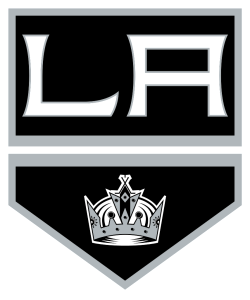 142. RW Evgeni Mityakin (Avto-Yekaterinburg, MHL):
142. RW Evgeni Mityakin (Avto-Yekaterinburg, MHL): Goal-scoring power winger with a blistering shot who played a quarter of the season in the KHL in preparation for a full-time role in 2017. Mityakin is a big kid (6’3, 210) who is patient with the puck and knows how to create his own shot while opening up the lane for himself. He’s deceptively fast, meaning he covers ground and can change gears despite owning a somewhat plodding skating style. What he does best is protect the puck using a wide stance and long wingspan. At times, it’s somewhat comical watching opponents try to steal the puck from him with half-hearted swipes when the puck is a good three or four feet away from them. He’s not much of a looker in the defensive zone, but his wingspan comes in handy on the penalty kill.
 143. G Adam Brizgala (Sparta Praha U21, Extraliga Jrs):
143. G Adam Brizgala (Sparta Praha U21, Extraliga Jrs): Wide-bodied backstop who began the year with a tremendous performance at the Ilvan Hlinka, then got hurt and had to missed practically the whole season. There was a point when he was considered the best goalie available for the draft, albeit for only a few months, and for good reason. He’s listed at 6’0, 209 pounds but is exceptionally quick and decisive, and his ability to properly reset after three or even four shots is almost pro-level. Brizgala plays a traditional butterfly and will venture outside of the blue paint to challenge shots, and he’s quick with the glove either when static or sliding across. He’s not the best puck handler, but it won’t make or break his chance at making higher levels of play. Muskegon in the USHL recently drafted him, so he may cross the pound sooner than later.
 *144. (FLA) LHD Kristaps Zile (Riga, MHL):
*144. (FLA) LHD Kristaps Zile (Riga, MHL): Easily one of the more underrated two-way defensemen in the draft, and it’s probably because he’s from Latvia and plays overseas more than anything else. He made somewhat a name for himself thanks to a wacky yet textbook hip check that went viral, but take out word for it when we say he’s a five-tool defender – he’s mobile, can hammer the puck whether off balance or not, make plays below the circles, obliterate opponents with big hits and most importantly, lead by example. Zile is primed for a top-four role in the KHL, but we’re hoping he gets to North America just so we can see more of him. He makes excellent reads and has proven to shoulder the responsibilities of a top-pairing defenseman.
 *145. (ANA) C/W Connor Bunnaman (Kitchener, OHL) ):
*145. (ANA) C/W Connor Bunnaman (Kitchener, OHL) ): Bunnaman is one of those ever-important two-way forwards who achieves results from either hard work and determination or completing plays with a high degree of difficulty – the former more frequent than the latter. He’s blessed with an NHL center’s frame (6’3, 215 pounds) and does all the dirty work to free up the finesse players like Jeremy Bracco or Ryan MacInnis, but he seemed to have worked best with tough-as-nails playmaker Adam Mascherin. This is important because he’s delivered when playing alongside skill or without, and that’s with the bulk of his responsibilities coming in his own half of the ice. Bunnaman won over 50 percent of his draws and 14 of his 16 goals game at even strength or shorthanded.
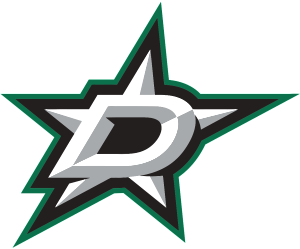 146. LW Nick Pastujov (U.S. U18, NTDP):
146. LW Nick Pastujov (U.S. U18, NTDP): Hard-working grinder with finishing abilities who was buried in Team USA’s bottom-six for months until a late-season surge landed him with more minutes and some well-deserved exposure. Pastujov scored some killer goals for Team USA at the last Five Nations and the U18 worlds that soon followed. He’s another Florida-born kid who’ll make a name for himself on Draft Day, but he’s going to have to overcome similar team-wide scoring depth when he suits up for a overcrowded Michigan squad next fall. Pastujov has above-average speed and a quick shot, and he likes to lay the body and dig into a defender’s business with an active stick and physicality. He’s never had the chance to strut his offensively capabilities over an extended period of time, so keep an eye on him as a late bloomer.
 147. LW Otto Koivula (Ilves U20, Liiga Jrs):
147. LW Otto Koivula (Ilves U20, Liiga Jrs): A somewhat gentle giant on skates who couldn’t crack a top-six role on any of Finland’s early-season U18 entries dating back to the Hlinka in August, then wasn’t invited to any after the November Five Nations. It’s probably more of a case of ridiculous depth than an indictment on the kind of player he is or can been, but the truth is that Koivula – all 6’4, 225 pounds of him – still had a strong junior season in which he was one of the top scorers in Finland’s U20 circuit. Koivula has a deadly wrist shot and a quick release, and while his average skating hinders his ability to score off the rush, he knows exactly where he needs to be to get clean looks while displaying proper stick positioning. At this point he’s a one-trick pony who happens to draw big crowds with that singular trick.
 148. LW Graham McPhee (U.S. U18, NTDP):
148. LW Graham McPhee (U.S. U18, NTDP): If the NTDP gave out a construction hat or black lunch pail as a postgame tradition recognizing the kid who gave his all, McPhee would have to get some kind of own storage space. This kid works his tail off, which came in handy for a program that was somewhat top heavy in the production department. His ice time was reduced when Team USA brought in a trio of ringers as a second line for the U18 worlds, but he still provided some punch with timely hitting and an aggressive forecheck. McPhee is Boston College-bound, so he’s going to have scratch and claw his way into a top-six role. He won’t dazzle you with any specific skill, should he be leaned on to provide offense. But his aggressive, hard-charging mentality and ability to kill penalties is what makes him both a safe pick and one with legitimate bottom-six potential.
 *149. (STL) LHD Colby Sissons (Swift Current, WHL):
*149. (STL) LHD Colby Sissons (Swift Current, WHL): Lanky puck-mover who can cover a lot of ground and make skill plays. Sissons has excellent first-step quickness and uses his wide stride to cover a lot of ground. Offense seems to come naturally to him, but he improved his defensive game enough to earn a spot in Swift Current’s top-4. Sissons is very athletic and uses his sublime skating/footwork to his advantage in all three zones. He may be just a teenager, but his reads are excellent, especially getting in the way of cross ice passes to turn the steal into an instant counterattack. Sissons has soft enough hands to help him corral cross-point passes, and he can get off an above-average shot in the process. Defensively, he’s smartening up, but all the smarts in the world won’t make you strong enough to win the positioning battles of the low slot. Sissons needs to bulk up for sure, but without hindering his outstanding skating ability.
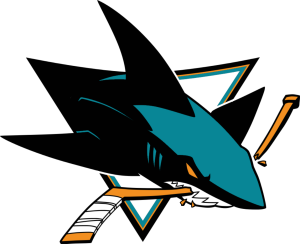 150. LW Jakob Stukel (Calgary, WHL):
150. LW Jakob Stukel (Calgary, WHL): A feel-good story who bounced back from two injury-ravaged seasons to lead the WHL with 18 power plays goals. Stukel may be an overager (March, 1997), but he sprouted into a 6’0, 185-pound frame rather quickly to become of the league’s better power forwards, with outstanding speed to boot. He has very good hand-eye coordination and soft hands which prevents the normal shaking you normally see from teenagers. The Oilers last year gave him a look at their development camp, but something tells us they’re going to regret letting him get away.
 151. RW Carson Meyer (Tri-City, USHL):
151. RW Carson Meyer (Tri-City, USHL): Talented 1997-born overage Ohioan with a devastatingly accurate shot who tied for fourth in the USHL with 32 goals in only 56 games. Meyer is committed to Miami University and should not have a problem ensconcing himself into a top-six role. He’s an average skater but difficult to contain, and although his assist totals seem low (19), he has the ability to thread the needle and set up teammate with quality chances. He plays with enthusiasm and doesn’t take shifts off. His size (5’11, 184 pounds) isn’t that big of an issue since he’s an inside player who fill take a hit to finish a play
 127. G Zach Sawchenko (Moose Jaw, WHL): It’s not a great draft for goalies in terms of depth and upside, but Sawchenko is an interesting candidate in that he actually produced an impressive wire-to-wire campaign in his first year of eligibility. A butterfly goalie with decent length (6’1) and quick reflexes, he finished sixth among WHL goalies who played 50 or more games in both wins (28) and save percentage (.916). Sawchenko’s biggest issue is net awareness – he loses himself despite properly facing the shooter, leading to a lot of short or long-side goals against. Still, he’s young enough to fix these minor kinks and be considered a candidate for Team Canada’s 2017 world junior squad.
127. G Zach Sawchenko (Moose Jaw, WHL): It’s not a great draft for goalies in terms of depth and upside, but Sawchenko is an interesting candidate in that he actually produced an impressive wire-to-wire campaign in his first year of eligibility. A butterfly goalie with decent length (6’1) and quick reflexes, he finished sixth among WHL goalies who played 50 or more games in both wins (28) and save percentage (.916). Sawchenko’s biggest issue is net awareness – he loses himself despite properly facing the shooter, leading to a lot of short or long-side goals against. Still, he’s young enough to fix these minor kinks and be considered a candidate for Team Canada’s 2017 world junior squad. 135. LHD Kristians Rubins (Vasteras , MHL): A season of promise may have been altered following offseason shoulder surgery which sidelined him until December, but this Latvian tower of power recovered to play top-pairing minutes for Vasteras. Rubins is a beast who loves to use every inch of his 6’4 frame to pulverize risk-taking puck carriers. He’s quite mobile for someone who already weighs 220 pounds, and his play in both Sweden’s Superelit and with Latvia during April’s European Hockey Tour revealed no ill effects from the injury. Rubins can blast the puck with authority which allowed him to play on the power play, but he’s still pretty raw when it comes to the offensive side of the ice. This kid is a terror to play against.
135. LHD Kristians Rubins (Vasteras , MHL): A season of promise may have been altered following offseason shoulder surgery which sidelined him until December, but this Latvian tower of power recovered to play top-pairing minutes for Vasteras. Rubins is a beast who loves to use every inch of his 6’4 frame to pulverize risk-taking puck carriers. He’s quite mobile for someone who already weighs 220 pounds, and his play in both Sweden’s Superelit and with Latvia during April’s European Hockey Tour revealed no ill effects from the injury. Rubins can blast the puck with authority which allowed him to play on the power play, but he’s still pretty raw when it comes to the offensive side of the ice. This kid is a terror to play against. *136. (MIN) RHD Casey Fitzgerald (Boston College, Hockey East): Former NTDP’er who should have been drafted a year ago but improved his case with a strong freshman campaign at The Heights. The son of former BC Eagle and NHL executive Tom Fitzgerald, Casey led all first-year Division I rearguards in assists (23) and placed second in scoring (27). He’s a very good skater and sees the ice extremely well, which helps make up for somewhat of a size disadvantage (5’10, 185 pounds). But he’s not just a finesse/playmaking type – Fitzgerald plays fearless and will do what it takes to win like block shots, challenge bigger forwards and protect his netminder.
*136. (MIN) RHD Casey Fitzgerald (Boston College, Hockey East): Former NTDP’er who should have been drafted a year ago but improved his case with a strong freshman campaign at The Heights. The son of former BC Eagle and NHL executive Tom Fitzgerald, Casey led all first-year Division I rearguards in assists (23) and placed second in scoring (27). He’s a very good skater and sees the ice extremely well, which helps make up for somewhat of a size disadvantage (5’10, 185 pounds). But he’s not just a finesse/playmaking type – Fitzgerald plays fearless and will do what it takes to win like block shots, challenge bigger forwards and protect his netminder. 148. LW Graham McPhee (U.S. U18, NTDP): If the NTDP gave out a construction hat or black lunch pail as a postgame tradition recognizing the kid who gave his all, McPhee would have to get some kind of own storage space. This kid works his tail off, which came in handy for a program that was somewhat top heavy in the production department. His ice time was reduced when Team USA brought in a trio of ringers as a second line for the U18 worlds, but he still provided some punch with timely hitting and an aggressive forecheck. McPhee is Boston College-bound, so he’s going to have scratch and claw his way into a top-six role. He won’t dazzle you with any specific skill, should he be leaned on to provide offense. But his aggressive, hard-charging mentality and ability to kill penalties is what makes him both a safe pick and one with legitimate bottom-six potential.
148. LW Graham McPhee (U.S. U18, NTDP): If the NTDP gave out a construction hat or black lunch pail as a postgame tradition recognizing the kid who gave his all, McPhee would have to get some kind of own storage space. This kid works his tail off, which came in handy for a program that was somewhat top heavy in the production department. His ice time was reduced when Team USA brought in a trio of ringers as a second line for the U18 worlds, but he still provided some punch with timely hitting and an aggressive forecheck. McPhee is Boston College-bound, so he’s going to have scratch and claw his way into a top-six role. He won’t dazzle you with any specific skill, should he be leaned on to provide offense. But his aggressive, hard-charging mentality and ability to kill penalties is what makes him both a safe pick and one with legitimate bottom-six potential. *149. (STL) LHD Colby Sissons (Swift Current, WHL): Lanky puck-mover who can cover a lot of ground and make skill plays. Sissons has excellent first-step quickness and uses his wide stride to cover a lot of ground. Offense seems to come naturally to him, but he improved his defensive game enough to earn a spot in Swift Current’s top-4. Sissons is very athletic and uses his sublime skating/footwork to his advantage in all three zones. He may be just a teenager, but his reads are excellent, especially getting in the way of cross ice passes to turn the steal into an instant counterattack. Sissons has soft enough hands to help him corral cross-point passes, and he can get off an above-average shot in the process. Defensively, he’s smartening up, but all the smarts in the world won’t make you strong enough to win the positioning battles of the low slot. Sissons needs to bulk up for sure, but without hindering his outstanding skating ability.
*149. (STL) LHD Colby Sissons (Swift Current, WHL): Lanky puck-mover who can cover a lot of ground and make skill plays. Sissons has excellent first-step quickness and uses his wide stride to cover a lot of ground. Offense seems to come naturally to him, but he improved his defensive game enough to earn a spot in Swift Current’s top-4. Sissons is very athletic and uses his sublime skating/footwork to his advantage in all three zones. He may be just a teenager, but his reads are excellent, especially getting in the way of cross ice passes to turn the steal into an instant counterattack. Sissons has soft enough hands to help him corral cross-point passes, and he can get off an above-average shot in the process. Defensively, he’s smartening up, but all the smarts in the world won’t make you strong enough to win the positioning battles of the low slot. Sissons needs to bulk up for sure, but without hindering his outstanding skating ability. 151. RW Carson Meyer (Tri-City, USHL): Talented 1997-born overage Ohioan with a devastatingly accurate shot who tied for fourth in the USHL with 32 goals in only 56 games. Meyer is committed to Miami University and should not have a problem ensconcing himself into a top-six role. He’s an average skater but difficult to contain, and although his assist totals seem low (19), he has the ability to thread the needle and set up teammate with quality chances. He plays with enthusiasm and doesn’t take shifts off. His size (5’11, 184 pounds) isn’t that big of an issue since he’s an inside player who fill take a hit to finish a play
151. RW Carson Meyer (Tri-City, USHL): Talented 1997-born overage Ohioan with a devastatingly accurate shot who tied for fourth in the USHL with 32 goals in only 56 games. Meyer is committed to Miami University and should not have a problem ensconcing himself into a top-six role. He’s an average skater but difficult to contain, and although his assist totals seem low (19), he has the ability to thread the needle and set up teammate with quality chances. He plays with enthusiasm and doesn’t take shifts off. His size (5’11, 184 pounds) isn’t that big of an issue since he’s an inside player who fill take a hit to finish a play